Year 11 Biology
Matrix Year 11 Biology courses are taught by experienced teachers using tried and tested resources. Learn online or on-campus.
Learning methods available
Select a year to see available courses

In this article, we will break down the various topics you will study in Year 11 Module 4: Ecosystem Dynamics to help you get ahead and ace Biology.
The biodiversity of the Earth has constantly changed since life first appeared on the planet.
In order to understand how our current ecosystems function and how they are changing, it is helpful to examine evidence of changes that occurred in these systems in the past.
Scientific knowledge gained from the fossil record and geological evidence enables scientists to study the complex relationships between biotic and abiotic factors.
You will look at ecosystem dynamics, past ecosystems and the models that can be used to predict future ecosystems so that human impact on biodiversity can be minimised.
This module will expand on relationships between biotic and abiotic factors in an ecosystem.
Abiotic factors (shown below) impact the distribution, abundance, morphology and ultimately the survival of organisms in an ecosystem.
For example, water and light availability affects the distribution of plants.
Complex biotic relationships exist between organisms in an ecosystem which impacts on the distribution and abundance of species.
During this module, you will look at specific examples of these relationships.
For example, predation affects the population of both prey and the predator ultimately.
The lynx population increases when the hare population is abundant as there is more food to sustain the lynx population.
This increase in predators decreases the hare population, to the point that Lynx run out of food and decline.
This eventually results in an increase in lynx and the cycle starts again.
During your class, you will cover the impact of such relationships in more detail.
The distribution and abundance of a population of organisms can be measured using sampling techniques including:
Natural disasters or human activities can disrupt population dynamics and result in the extinction of species.
A recent case of extinction is the Thylacine (Tasmanian tiger) which was a carnivorous marsupial closely related to the Tasmanian devil.
The hunting of the Thylacine by farmers caused a major decline and ultimately the extinction of the species.
Video footage of this animal is rare and a short clip of the last animal in captivity was recently rediscovered.
Get ahead these holidays with our Holiday Courses. Our HSC expert teachers will guide you through the term’s content in detail and provide you with plenty of practice to prepare you for the term! Learn more now.
Don't just memorise. Understand.
Expert teachers, weekly quizzes, one-to-one help! Ace your next Biology assessment with Matrix+ Online.
Since ecosystems change over time, paleontological and geological evidence can be used to provide insight into past ecosystems.
This includes Aboriginal rock paintings, rock structure and formation, and ice core drilling.
Palaeontologists can use Aboriginal rock paintings as recordings of the species present in different regions tens of thousands of years ago.
The discovery of two emu-like paintings in Arnhem Land provided evidence that humans co-existed with the megafauna bird Genyornis which became extinct over 40 000 years ago.
Evidence of continental drift helps us understand how environments on different continents would have changed in the past.
Magma rising from the ocean floor pushes through the crust and eventually cools down forming new rocks. These mid-ocean ridges or spreading zones push continental plates apart.
The existence of mid-ocean ridges provides evidence that continents were once joined together.
The distribution of fossils also supports the idea of continental drift, as fossils of some organisms are found on continents that now are very far apart and have different habitats.
For example, fossils of the now-extinct Glossopteris plant are found across all of the continents shown below.
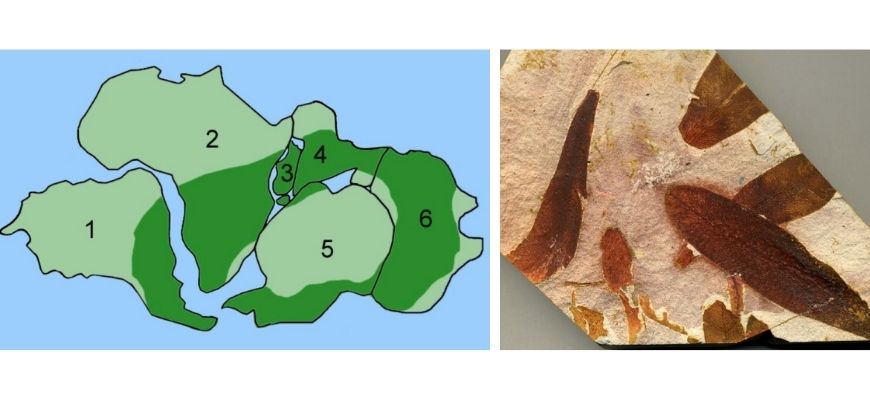
Ice cores taken from polar ice caps and glaciers can reveal information about past climates.
As snow falls, air is trapped under the layers of snow.
As the snow becomes ice, the gases, dust particles, ash and pollen in the air become trapped.
Scientists can extract this material from cores of ice which provide a chronological record of the Earth’s past climate.
insert image
Gas analysis is used to extract information from tiny bubbles containing atmospheric gas that becomes trapped in the ice cores.
The ice can be crushed to release the trapped gasses, which are then separated out by a gas chromatograph.
Isotopes can be identified by Isotope Ratio Mass Spectrometry.
Radiometric dating can be used to determine the absolute age of a material such as rocks or fossils.
An example of a radioisotope is Carbon-14 which is taken up by organisms while they are alive and upon their death begins to decay to become Carbon-12.
The ratio of Carbon-14 to Carbon-12 continues to change consistently over time, so this ratio can be used to estimate the age of the sample.
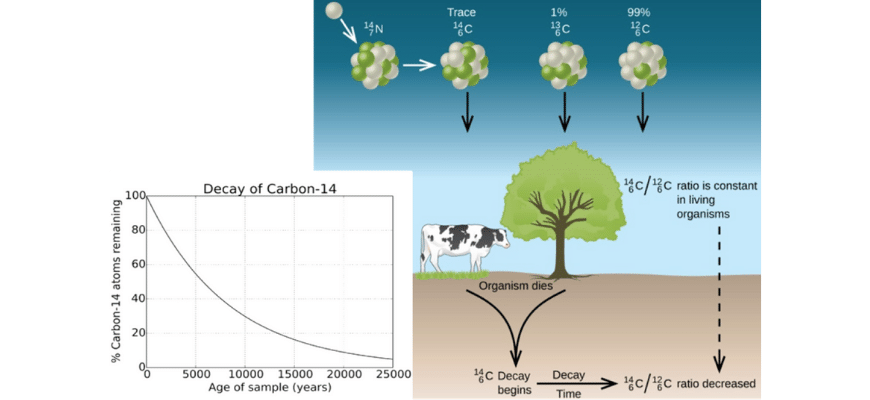
During Module 4 you will also look at how fossil animals, plants and pollen reveal how Australian organisms evolved after Australia became an island continent.
For example, Dickson’s Thylacine was a small carnivorous marsupial. It is the common ancestor of modern carnivorous marsupials such as the Tiger quoll, Tasmanian devil and Tasmanian tiger.
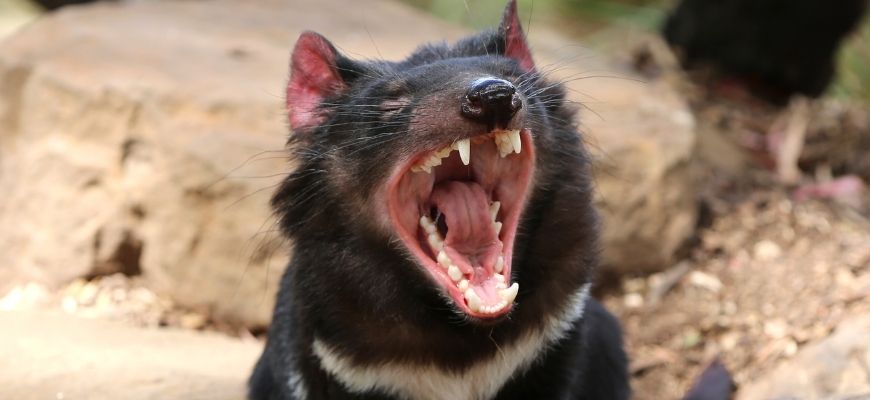
The modern-day prevalence of sclerophyll plants in Australia provides evidence that as Australia drifted North from Antarctica, its climate became warmer and drier.
While fossils indicate there were widespread rainforests across Australia in the past, the continent is now populated with sclerophyll plants such as Eucalyptus that have small leaves and a thick waxy cuticle as an adaptation for dry climates.
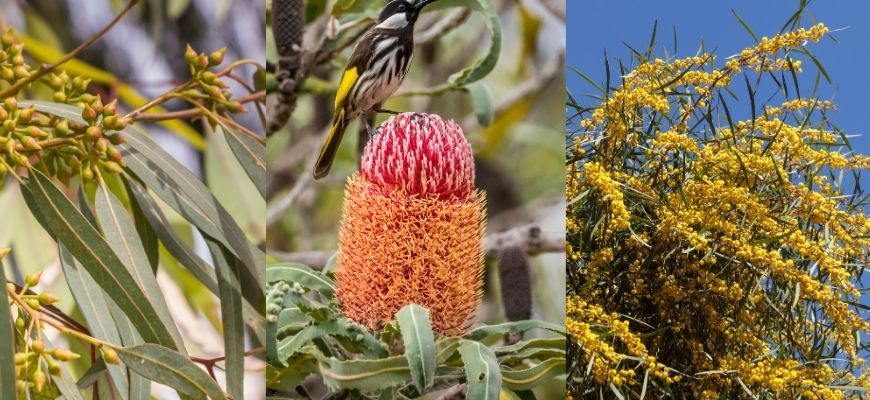
Humans have been responsible for a variety of biotic and abiotic changes to ecosystems. This includes:
The study of past ecosystems and understanding how they are changing now will enable scientists to predict future impacts on biodiversity.
Scientists can use modelling to depict processes and systems of future impact.
A simple example is a food web that shows how change to one species leads to flow-on effects for other species as a result.
Other examples include the use of computer models or manipulative experiments to observe how organisms and ecosystems respond to predicted future changes.
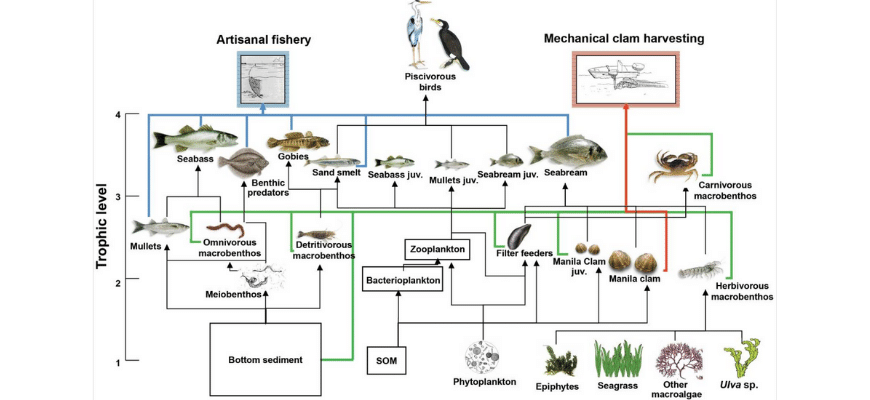
In this module, you will examine some practices used to restore land that is degraded due to mining or agricultural practices.
Since mining is a highly destructive process, government bodies work with mining companies to implement a restoration plan once the mine is decommissioned. This includes:
An example of such a restoration practice includes the Westside Mine in Lake Macquarie, New South Wales that was successfully restored post-mining in 2012.
The land now has many established native plants and animals and even some threatened species such as the squirrel glider.
© Matrix Education and www.matrix.edu.au, 2023. Unauthorised use and/or duplication of this material without express and written permission from this site’s author and/or owner is strictly prohibited. Excerpts and links may be used, provided that full and clear credit is given to Matrix Education and www.matrix.edu.au with appropriate and specific direction to the original content.